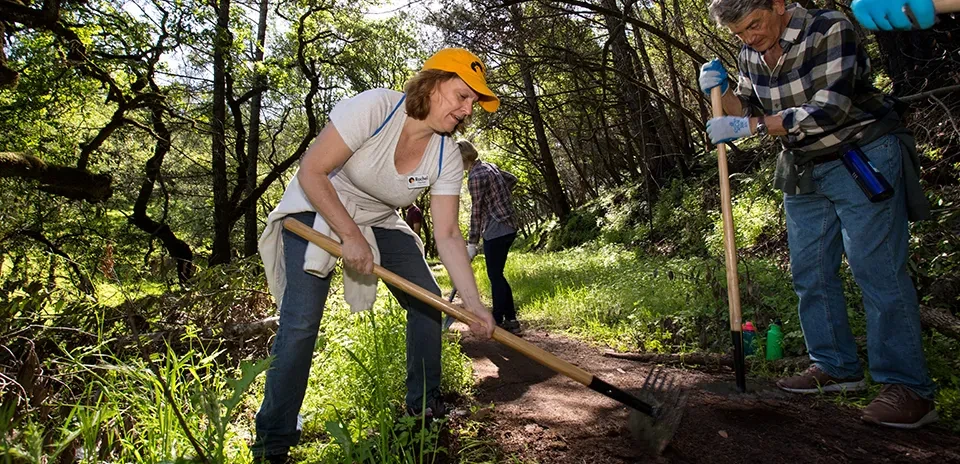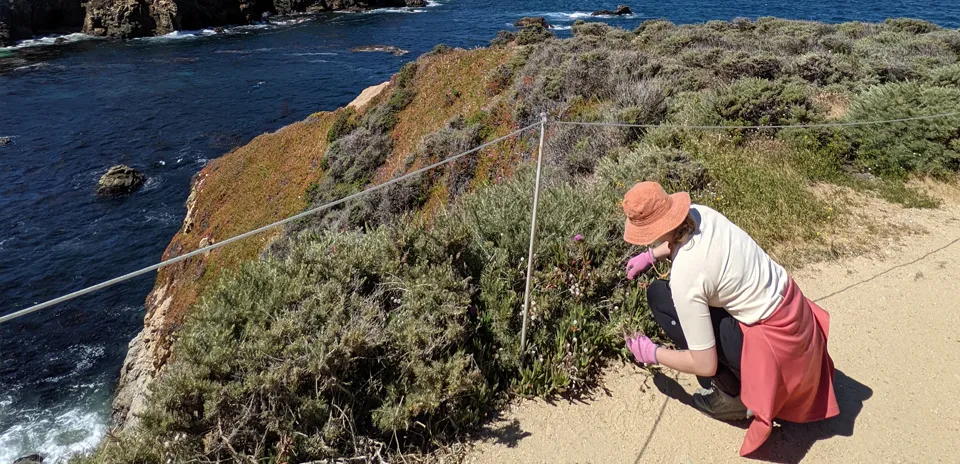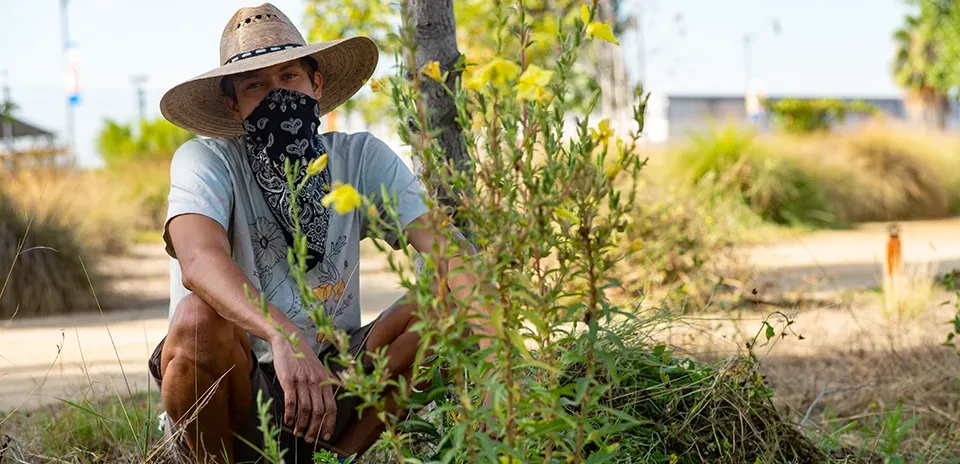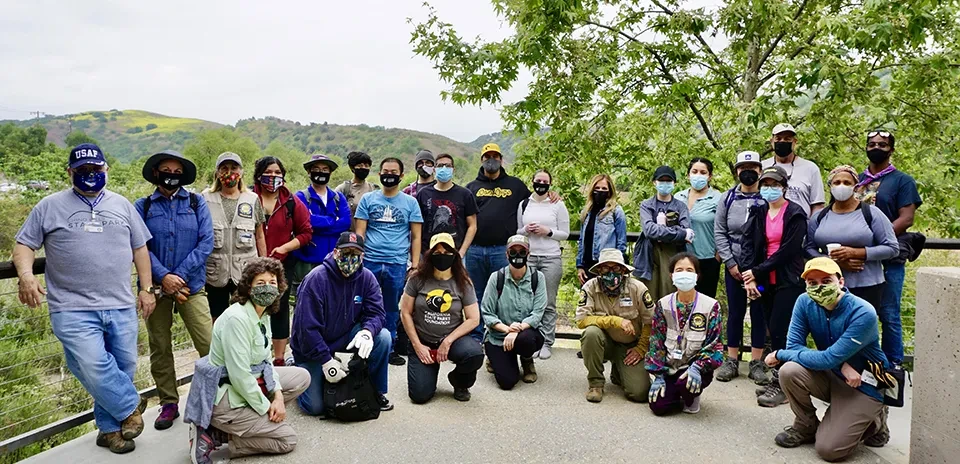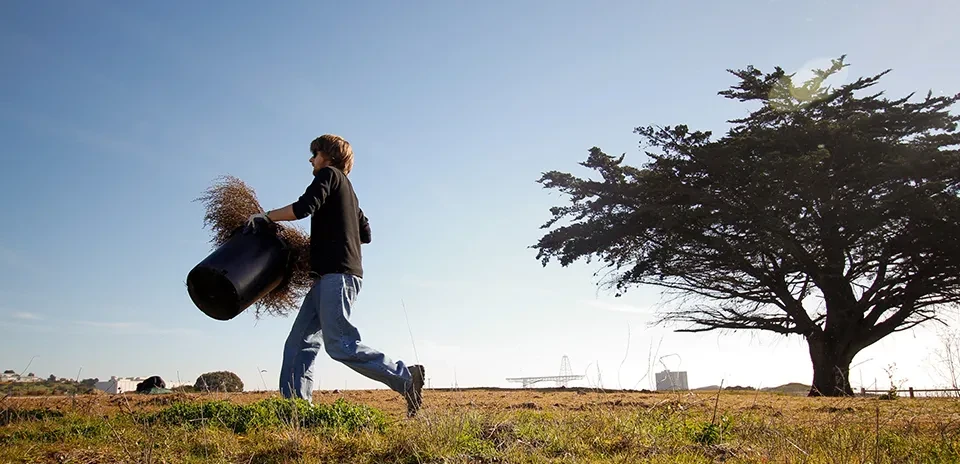A look at California State Parks Foundation’s volunteer program with Executive Director, Rachel Norton.
I recently heard a very wise person say that when you heal the land, you heal a community. In many parts of California, our land is sick — we are suffering a severe drought, destructive wildfires, and some of our most iconic plant and animal species are experiencing stress from climate change.
Volunteer Stewardship
At California State Parks Foundation, we see volunteer stewardship as an important way to connect people with their public lands. Literally getting your hands dirty by removing invasive plants and planting new native plants, or creating more welcoming parks with accessible trails or freshly painted picnic tables can be incredibly soul-satisfying.
When you volunteer in a California state park, you’re not only helping dedicated park staff care for these special places, you are healing the land and enabling others to connect more deeply to it. Volunteers give back and restore landscapes that have nurtured Californians for thousands of years and ensure that they endure for the enjoyment of future generations.
The hard work of a volunteer not only creates positive impact on the park’s resources – it also ripples out in other ways. Each volunteer gains a deeper understanding, learning how the improvements they make will bring real change. With this deeper understanding, volunteers become some of the biggest champions for the environment. They take that knowledge with them as they make choices when they shop, vote, and more.
Building Statewide Solutions
As we see success through our volunteer projects, we generate the knowledge to create statewide solutions. Through statewide policy and the California budget process, we work to get funding to scale these solutions that build climate resilient parks. We learn from these projects and can use this knowledge to work with legislators to craft bills and testify in committees to the success of these efforts.
For example, California is dealing with extreme heat. Legislative solutions, like proposed bill AB 585 (Rivas, Luz), include increasing the tree canopy, installing cool roofs and cool walls, building with cool pavement, and increasing the number of drinking fountains and shade structures.
Our volunteers have worked to build shade structures at parks like Salton Sea State Recreation Area, creating cooler temperatures. And strategically planting trees to increase the tree canopy in parks like Los Angeles State Historic Park.
Wildfires are a natural part of California's landscape now. The fire season in California is starting earlier and ending later each year. Legislative solutions, like proposed bills SB 45 (Portantino) and AB 1500 (Garcia), fund projects for safe drinking water, wildfire prevention, drought preparation, flood protection, extreme heat mitigation, and workforce development programs.
As part of Earth Day Climate Action 2021, our volunteers cleared dead and invasive brush from around the Chino Hills State Park Discovery Center and native plant trail. This cleared out invasive plants that threaten the native plants that are there. This also cleared out dead brush from around the Discovery Center, which made the building site more fire resilient.
Invasive plants are always a problem, which is being made worse by the effects of climate change. Also, by making the site more fire resilient, this will help temper the effects of increased and more severe wildfires caused by climate change.
Sea level rise is impacting our coastal state parks. Legislative solutions, like proposed bill AB 67 (Petrie-Norris), recommended policies, resolutions, projects, and other actions to address sea level rise, the breadth of its impact, and the severity of its anticipated harm.
California State Parks Foundation’s current work at Yosemite Slough, part of Candlestick Point State Recreation Area, is one model that we are looking to as the future of managing coastal resources and to build climate resilient parks. Using natural systems, our volunteers are helping to create a “living shoreline” by restoring the natural tidal influences and habitat where there was once landfill and debris with little biological and recreational value. This living shoreline can now better absorb the extreme tidal events and protect from erosion and flooding. It also dramatically increases habitat for native plants and animals and creates a high-quality natural space for the local communities to enjoy.
We are tremendously grateful to the thousands of people who volunteer with us each year. They are helping to build a healthier and more resilient California.
Together, we are healing our lands and our communities across the state. Thank you!
